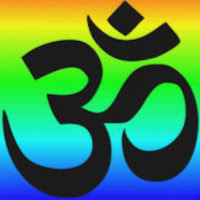Objects in the world vary but different eyes aren’t required to see various objects.
Objects in the world transform every second but my eyes aren’t changed by what they see.
Objects in the world are seen as countless yet my eyes are but one seer.
Thus Brahman is formless, changeless, and nondual.
a. The Loneliest Road
They say US 50 in Nevada is the loneliest road in America. That's a bit anthropomorphic, isn't it? I never heard it complain.
Topographically speaking, US 50 in Nevada is all basin and range. The landscape is quite flat until it isn't.
In one of those long flat sections, I stopped and turned off the car. It was absolute silence as far as the eye could see.
In that desert, nothing is superimposed upon pure existence but this mirage. God help me but sometimes I take it personally.
b. Vidyaranya's Genius
The eyes are the first seer. The mind is the second seer. Atman is the only seer.
That brahman is formless, changeless, and nondual is not a metaphysical statement, but one of both the physical and subtle bodies.
This is Vidyaranya's genius. Right here, right now, even your eyes are brahman. See?
c. On Gurdjieff, Vedanta, and Knowledge
Gurdjieff says one should read written expositions thrice. The first is a mechanical reading. The second is as one heart listening to another. And the third is fathoming the subject.
Vedanta says sravana, manana, and nididhyasana.
Sravana is like listening externally. Manana is like listening internally. And nididhyasana is like abidance in the subject.
Or hearing, contemplating, and knowing.
d. Drg Drsya Bibliographically Speaking
I first read Vidyaranya's DDV early last year. It was love at first sight. I went to the woods of Vedanta to get closer to Nisargadatta.
DDV is like 200 proof distilled Vedanta. These Drg Drsya Viveka translators and commentators deserve commendation.
Nikhilananda, founder of the Ramakrishna-Vivekananda Center of New York. Clear, concise, and kensho-inducing at times.
Sarvapriyananda, Minister of the Vedanta Society of New York. Youtube, storyteller, helpful.
Tejomayananda, head of Chinmaya Mission from 1994 to 2017. Comprehensive and noteworthy.
Dayananda, given Sannyasa in 1963 by Swami Chinmayananda & named Dayananda in 1963, founder of Arsha Vidya 1986, and spiritual Guru of Prime Minister Narendra Modi.
Sanskrit-dominant, released post-mahasamadhi without Dayananda's brilliant editing, but there's gold in them hills.
Paramarthananda, studied under Chinmayananda, took sannyasa from Dayananda, and is devoted to both sages. PDF but prescient.
e. The Rose of Advaita
If reality is formless, changeless, and nondual, then it follows that the world of form, transformation, and duality isn't real.
According to Advaita Vedanta, this Maya isn't unreal though. Maya is like a movie. The television screen is like Plato's witness.
Your destiny is self-realization. DNA is like karma. There is no journey. A mirage is a mirage is a mirage.
f. To Bet Your Life
Why did the chicken cross the road? To let its karma runneth over.
People of the world, please accept my resignation.
Hello, I must be going. I cannot stay, I came to say, "I must be going."









